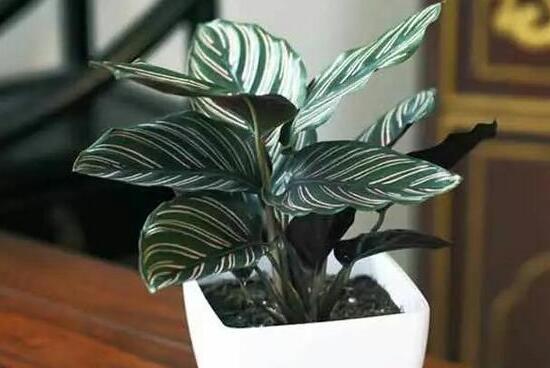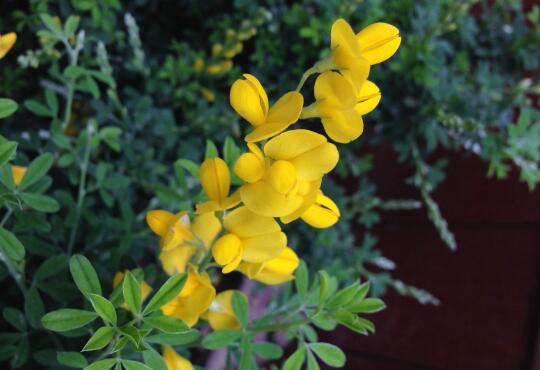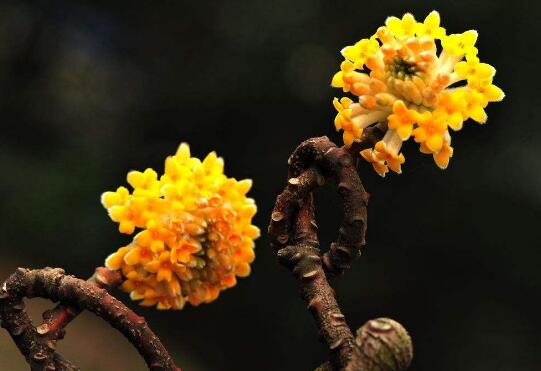How to propagate double-line taro and two propagation methods of double-line taro (cutting / ramet)
Double-line taro, a beautiful foliage plant, has broad leaves and rich colors, and the three colors are as good as white, green and red. In life, because the efficacy of double-line taro is powerful, many people keep it, but is a pot too monotonous? It's time to breed a few more pots, how to reproduce the double-line taro? The following are two propagation methods of double-line taro, let's learn and have a look.
First, how to propagate double-line taro, cuttings / ramets

On how to propagate double-line taro, in fact, like most indoor potted plants, it is suitable for cutting propagation: cutting 10-15cm cuttings and inserting them into the soil after a little treatment; in addition, double-line taro can also take the method of dividing plants: cutting the roots of stems and leaves or leaf buds with a sharp blade and planting them in humus-rich soil.
1. two propagation methods of double-line taro (1) cuttage propagation of double-line taro
1. Cutting time
Double-line taro likes a warm environment and can be cut as long as the temperature is not less than 20 ℃, but in order to improve the success rate of reproduction, it is best to do it in late spring and early summer.
2. Cuttings selection
If you want to cut double-line taro, the most important thing is to select the cuttings. In this regard, we can be in the well-growing double-line taro pot, pick the base with top shoots, the base had better have 3 leaves, it will be cut into 10Mel 15cm as cuttings.
Treatment of cuttings: before cutting, in order to improve the rooting rate, we should soak the cuttings in 500ppm's NAA solution and stay for 2 Mel for 3 seconds.
3. Cuttage starts
Ready to do the above, you can officially start cutting propagation. Insert the prepared cuttings into the substrate (peat soil and river sand are evenly mixed).
4. Plug-in management
After insertion, keep the soil moist, the temperature is 20-30 ℃, and the air relative humidity is 75% 85%. It will take root and sprout after a month. After 10 days or so can be moved in the basin, and then according to the culture method of double-line taro to normal maintenance.
(2) split propagation of double-line bamboo taro.
In addition to cutting, the propagation method of double-line taro can also choose the method of dividing plants, and the survival rate is very high. Methods: in the spring when the temperature reached 20 ℃, the root mass with stem, leaf or leaf bud was cut with a sharp blade and placed directly in the flowerpot. After ramet, it can be cultured in a cool place to maintain the wetness of the soil and wait for the rhizome to take root and sprout.
Generally speaking, propagation of double-line taro, whether it is cutting or ramet, can survive. However, the survival rate of cutting is lower than that of plant propagation, about 50%, so it is best to adopt the method of plant division in general family reproduction. With regard to the breeding method of double-line taro, the editor has introduced this, hoping to give you some help.
Propagation method of double-line taro
Propagation of Amorphophallus davidiana: split plant method
Ramet is the most commonly used propagation method of double-line taro, which is usually carried out when the temperature reaches about 20 ℃ in spring.
The soil in flowerpots or seedbeds should be slightly acidic soil rich in humus, usually mixed with rotten leaf soil and peat soil, or mixed with pond mud, peat and perlite at the ratio of 2:3:1; or it can be made of loose rotten leaf soil rich in organic matter and perlite plus a small amount of base fertilizer.
First of all, use a sharp knife to cut the root block with stem leaves or leaf buds. If it is family breeding and the quantity demand is small, the cut root block with stem leaves and leaf buds can be directly placed in the flowerpot; if it is mass reproduction, place it in the seedbed.
To keep the ambient temperature at 20 ℃-28 ℃ and the relative humidity above 80%, it is necessary to cover the flowerpot or seedbed with a thin film if the temperature and humidity are not reached.
Propagation of double-line taro: cutting method
Cuttings are generally carried out when the temperature is not less than 20 ℃, in any season.
Double-line taro cuttings generally use top shoots, and the length of the cuttings intercepted should be 10 Mur15 cm. If the leaves grow vigorously, they need to retain 1/3 of the leaves. If the leaves grow weakly and are relatively small, then they need to retain 1/2 of the leaves.
Before cutting, the cuttings were soaked in 500ppm's NAA solution and stayed for 2 seconds. They could also be treated with indoleacetic acid, indolebutyric acid and ABT rooting powder.
After treatment, the cuttings are tilted into the nursery bed or flowerpot. If they are propagated in large quantities, the row spacing of the double-line taro should be about 5 × 10 cm, so as to ensure the normal growth of the plant.
After cutting, the cuttings are covered with film, the temperature is controlled at 20 ℃-30 ℃, and the air relative humidity is 75% Mel 85%.
The survival rate of cuttings is lower than that of plant propagation, about 50%, so it is best to adopt ramet reproduction in general family culture.
Introduction to the common breeding methods of double-line taro, as well as the maintenance after breeding, we must be very familiar with taro, and taro is also very popular. There are many varieties of taro, and double-line taro is one of them. Double-line taro is a good evergreen foliage plant, and its leaves have clear lines, so it is very suitable for decoration and beautification at home. Today, I will take you to understand the breeding method of double-line taro.
I. split-plant method
Ramet is the most commonly used propagation method of double-line taro, which is usually carried out when the temperature reaches about 20 ℃ in spring.
1. Steps
The soil in flowerpots or seedbeds should be slightly acidic soil rich in humus, usually mixed with rotten leaf soil and peat soil, or mixed with pond mud, peat and perlite at the ratio of 2:3:1; or it can be made of loose rotten leaf soil rich in organic matter and perlite plus a small amount of base fertilizer.
First of all, use a sharp knife to cut the root block with stem leaves or leaf buds. If it is family breeding and the quantity demand is small, the cut root block with stem leaves and leaf buds can be directly placed in the flowerpot; if it is mass reproduction, place it in the seedbed.
2. Maintenance
To keep the ambient temperature at 20 ℃-28 ℃ and the relative humidity above 80%, it is necessary to cover the flowerpot or seedbed with a thin film if the temperature and humidity are not reached.
2. Cutting method
Cuttings are generally carried out when the temperature is not less than 20 ℃, in any season.
1. Steps
Double-line taro cuttings generally use top shoots, and the length of the cuttings intercepted should be 10 Mur15 cm. If the leaves grow vigorously, they need to retain 1/3 of the leaves. If the leaves grow weakly and are relatively small, then they need to retain 1/2 of the leaves.
Before cutting, the cuttings were soaked in 500ppm's NAA solution and stayed for 2 seconds. They could also be treated with indoleacetic acid, indolebutyric acid and ABT rooting powder.
After treatment, the cuttings are tilted into the nursery bed or flowerpot. If they are propagated in large quantities, the row spacing of the double-line taro should be about 5 × 10 cm, so as to ensure the normal growth of the plant.
2. Maintenance
After cutting, the cuttings are covered with film, the temperature is controlled at 20 ℃-30 ℃, and the air relative humidity is 75% Mel 85%. The survival rate of cuttings is lower than that of plant propagation, about 50%, so it is best to adopt ramet reproduction in general family culture.
The above is the breeding method and maintenance of double-line taro. I hope it can be helpful to the majority of flower friends. Please continue to pay attention to the succulent flower bed and learn more about flower conservation.
- Prev

How to reproduce broom, the method of broom propagation / sowing propagation / ramet propagation
Broom is a kind of flower plant of the genus Leguminosae, which can be seen in many areas of our country. With more and more people raising it, people are more concerned about its reproduction. How to reproduce broom? What are the breeding methods of broom? Next, the editor will take you to learn about it.
- Next

How to propagate fragrant flowers, the propagation method of fragrant flowers / mainly by cutting propagation
The fragrant flower is a kind of flower plant of the genus Daphne, which can be seen in many parts of our country. With more and more people raising it, people are more concerned about its reproduction, about how to reproduce. What are the breeding methods of fragrant flowers? Next, the editor will take you to learn about it.
Related
- Fuxing push coffee new agricultural production and marketing class: lack of small-scale processing plants
- Jujube rice field leisure farm deep ploughing Yilan for five years to create a space for organic food and play
- Nongyu Farm-A trial of organic papaya for brave women with advanced technology
- Four points for attention in the prevention and control of diseases and insect pests of edible fungi
- How to add nutrient solution to Edible Fungi
- Is there any good way to control edible fungus mites?
- Open Inoculation Technology of Edible Fungi
- Is there any clever way to use fertilizer for edible fungus in winter?
- What agents are used to kill the pathogens of edible fungi in the mushroom shed?
- Rapid drying of Edible Fungi

